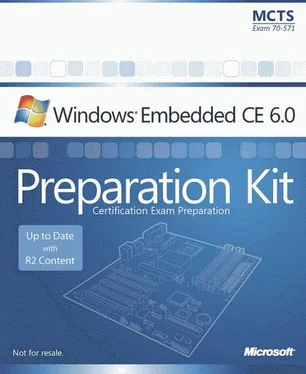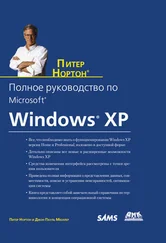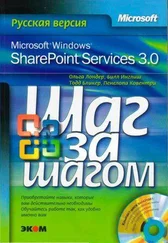Nicolas Besson - Microsoft Windows Embedded CE 6.0 Exam Preparation Kit
Здесь есть возможность читать онлайн «Nicolas Besson - Microsoft Windows Embedded CE 6.0 Exam Preparation Kit» весь текст электронной книги совершенно бесплатно (целиком полную версию без сокращений). В некоторых случаях можно слушать аудио, скачать через торрент в формате fb2 и присутствует краткое содержание. Город: Redmond, Год выпуска: 2008, Издательство: Microsoft, Жанр: Руководства, ОС и Сети, Программы, на английском языке. Описание произведения, (предисловие) а так же отзывы посетителей доступны на портале библиотеки ЛибКат.
- Название:Microsoft Windows Embedded CE 6.0 Exam Preparation Kit
- Автор:
- Издательство:Microsoft
- Жанр:
- Год:2008
- Город:Redmond
- ISBN:нет данных
- Рейтинг книги:5 / 5. Голосов: 1
-
Избранное:Добавить в избранное
- Отзывы:
-
Ваша оценка:
- 100
- 1
- 2
- 3
- 4
- 5
Microsoft Windows Embedded CE 6.0 Exam Preparation Kit: краткое содержание, описание и аннотация
Предлагаем к чтению аннотацию, описание, краткое содержание или предисловие (зависит от того, что написал сам автор книги «Microsoft Windows Embedded CE 6.0 Exam Preparation Kit»). Если вы не нашли необходимую информацию о книге — напишите в комментариях, мы постараемся отыскать её.
Microsoft Windows Embedded CE 6.0 Exam Preparation Kit — читать онлайн бесплатно полную книгу (весь текст) целиком
Ниже представлен текст книги, разбитый по страницам. Система сохранения места последней прочитанной страницы, позволяет с удобством читать онлайн бесплатно книгу «Microsoft Windows Embedded CE 6.0 Exam Preparation Kit», без необходимости каждый раз заново искать на чём Вы остановились. Поставьте закладку, и сможете в любой момент перейти на страницу, на которой закончили чтение.
Интервал:
Закладка:
Registry Keys Related to Loaded Device Drivers<\/p> <\/div>
Apart from configurable registry entries in driver-specific subkeys, Device Manager also maintains dynamic registry information in subkeys for loaded drivers under the HKEY_LOCAL_MACHINE\Drivers\Active key. The subkeys correspond to numerical values that the operating system assigns dynamically and increments for each driver until the system is restarted. The number does not signify a particular driver. For example, if you unload and reload a device driver, the operating system assigns the next number to the driver and does not reuse the previous subkey. Because you cannot ensure a reliable association between the subkey number and a particular device driver, you should not edit the driver entries in the HKEY_LOCAL_MACHINE\Drivers\Active key manually. However, you can create, read, and write driver-specific registry keys at load time in a driver's XXX_Init function because Device Manager passes the path to the current Drivers\Active subkey to the stream driver as the first parameter. The driver can open this registry key using OpenDeviceKey.<\/p>
Table 6-4 lists typical entries that the subkeys under Drivers\Active can contain.<\/p>
Table 6-4 Registry entries for device drivers under the HKEY_LOCAL_MACHINE\Drivers\Active key<\/strong> <\/p>
| Registry Entry<\/th> | Type<\/th> | Description<\/th> <\/tr> |
|---|---|---|
| Hnd<\/td> | REG_DWORD<\/td> | The handle value for the loaded device driver. You can obtain this DWORD value from the registry and pass it in a call to DeactivateDevice in order to unload the driver.<\/td> <\/tr> |
| BusDriver<\/td> | REG_SZ<\/td> | The name of the driver's bus.<\/td> <\/tr> |
| BusName<\/td> | REG_SZ<\/td> | The name of the device's bus.<\/td> <\/tr> |
| DevID<\/td> | A unique device identifier from Device Manager.<\/td> <\/tr> | |
| FullName<\/td> | REG_SZ<\/td> | The name of the device if used with the $device namespace.<\/td> <\/tr> |
| Name<\/td> | REG_SZ<\/td> | The driver's legacy device file name including index, if a prefix is specified (not present for drivers that do not specify a prefix).<\/td> <\/tr> |
| Order<\/td> | REG_DWORD<\/td> | The same order value as in the driver's registry key.<\/td> <\/tr> |
| Key<\/td> | REG_SZ<\/td> | The registry path to the driver's registry key.<\/td> <\/tr> |
| PnpId<\/td> | REG_SZ<\/td> | The Plug and Play identifier string for PCMCIA drivers.<\/td> <\/tr> |
| Sckt<\/td> | REG_DWORD<\/td> | For PCMCIA drivers, describes the current socket and function of the PC card.<\/td> <\/tr> <\/table>
NOTE<\/div>
Checking the Active key<\/div>
By calling the RequestDeviceNotifications function with a device interface GUID of DEVCLASS_STREAM_GUID, an application can receive messages from Device Manager to identify loaded stream drivers programmatically. RequestDeviceNotifications supersedes the EnumDevices function.<\/p> <\/cite> Kernel-Mode and User-Mode Drivers<\/p> <\/div> Drivers can either run in the kernel memory space or in user memory space. In kernel mode, drivers have full access to the hardware and kernel memory, although function calls are generally limited to kernel APIs. Windows Embedded CE 6.0 runs drivers in kernel mode, by default. On the other hand, drivers in user mode do not have direct access to kernel memory. There are some performance penalties when running in user mode, yet the advantage is that a driver failure in user mode only affects the current process, whereas the failure of a kernel-mode driver can impair the entire operating system. The system can generally recover more gracefully from the failure of a user-mode driver.<\/p> NOTE<\/div>
Kernel driver restrictions<\/div>
Kernel drivers cannot display a user interface directly in CE 6.0 R2. To use any user interface elements, developers must create a companion DLL that will be loaded into user-mode, then call into this DLL with CeCallUserProc. For more information on CeCallUserProc, see the MSDN Web page at http://msdn2.microsoft.com/en-us/library/aa915093.aspx<\/em> .<\/p> <\/cite> User-Mode Drivers and the Reflector Service<\/p> <\/div> In order to communicate with the underlying hardware and perform useful tasks, user-mode drivers must be able to access system memory and privileged APIs unavailable to standard user-mode processes. To facilitate this, Windows Embedded CE 6.0 features a Reflector service, which runs in kernel mode, performs buffer marshaling, and calls privileged memory management APIs on behalf of the user- mode drivers. The Reflector service is transparent so that user-mode drivers can work almost the same way as kernel-mode drivers without modifications. An exception to this rule is a driver that uses kernel APIs that are not available in user mode. It is not possible to run these types of kernel-mode drivers in user mode.<\/p> When an application calls ActivateDeviceEx, Device Manager loads the driver either directly in kernel space or passes the request to the Reflector service, which in turn starts a user mode driver host process (Udevice.exe) through a CreateProcess call. The Flags registry entry in the driver's registry key determines whether a driver should run in user mode (DEVFLAGS_LOAD_AS_USERPROC flag). Having started the required instance of Udevice.exe and user-mode driver, the Reflector service forwards the XXX_Init call from Device Manager to the user-mode driver and returns the return code from the user-mode driver back to Device Manager, as indicated in Figure 6-5. The same proxy principle also applies to all other stream functions.<\/p> User-Mode Drivers Registry Settings<\/p> <\/div> On Windows Embedded CE 6.0, you can run multiple user-mode drivers in a single host process or have multiple host processes enabled on the system. Drivers grouped in a single Udevice.exe instance share the same process space, which is particularly useful for drivers that depend on each other. However, drivers in the same process space can affect each other's stability. For example, if a user-mode driver causes the host process to fail, all drivers in that host process fail. The system continues to function except for the affected drivers and applications accessing these drivers, yet it is possible to recover from this situation by reloading the drivers, if the applications support it. If you isolate a critical driver in a separate user mode driver host process, you can increase the overall system stability. By using the registry entries listed in Table 6-5, you can define individual host process groups.<\/p> |
Интервал:
Закладка:
Похожие книги на «Microsoft Windows Embedded CE 6.0 Exam Preparation Kit»
Представляем Вашему вниманию похожие книги на «Microsoft Windows Embedded CE 6.0 Exam Preparation Kit» списком для выбора. Мы отобрали схожую по названию и смыслу литературу в надежде предоставить читателям больше вариантов отыскать новые, интересные, ещё непрочитанные произведения.
Обсуждение, отзывы о книге «Microsoft Windows Embedded CE 6.0 Exam Preparation Kit» и просто собственные мнения читателей. Оставьте ваши комментарии, напишите, что Вы думаете о произведении, его смысле или главных героях. Укажите что конкретно понравилось, а что нет, и почему Вы так считаете.








